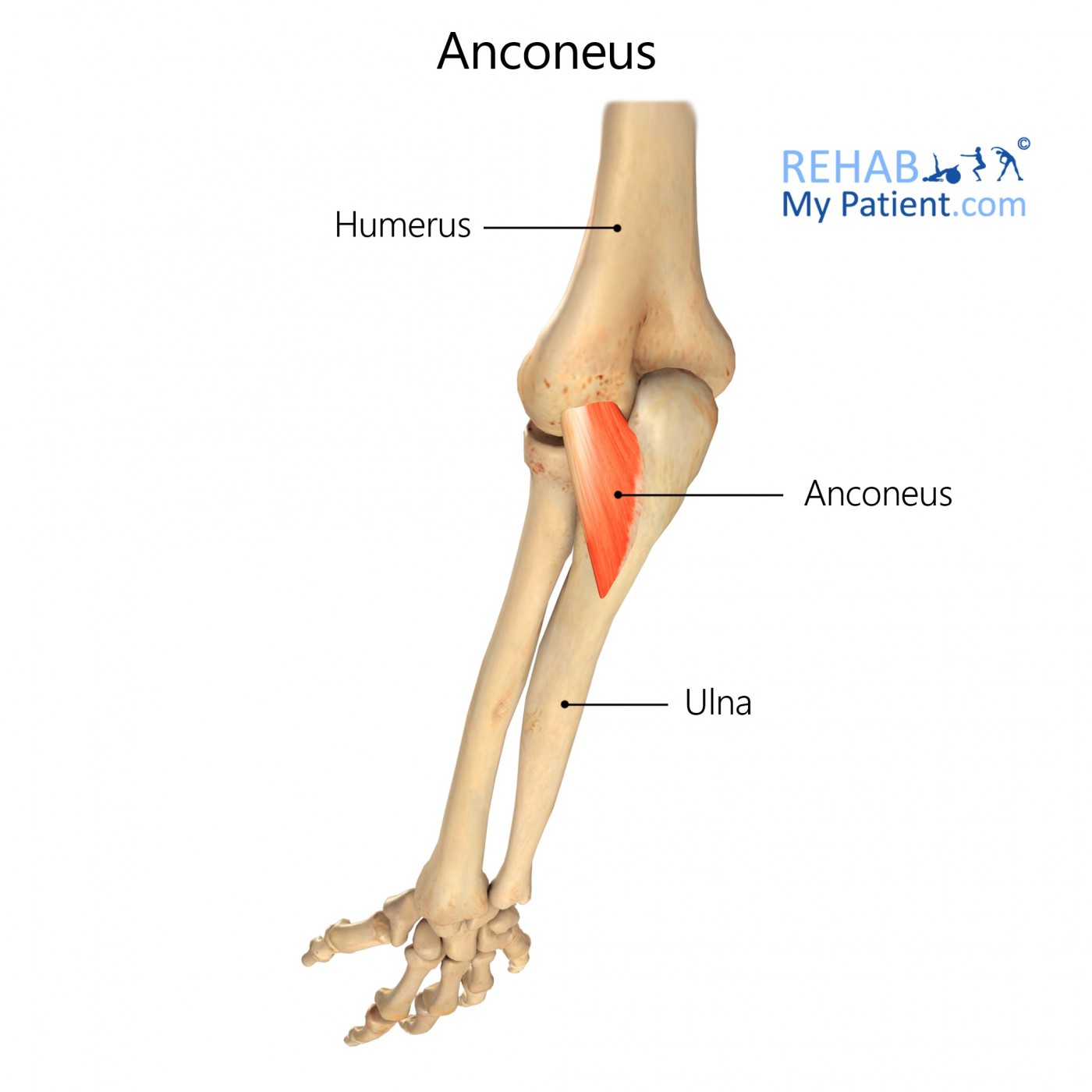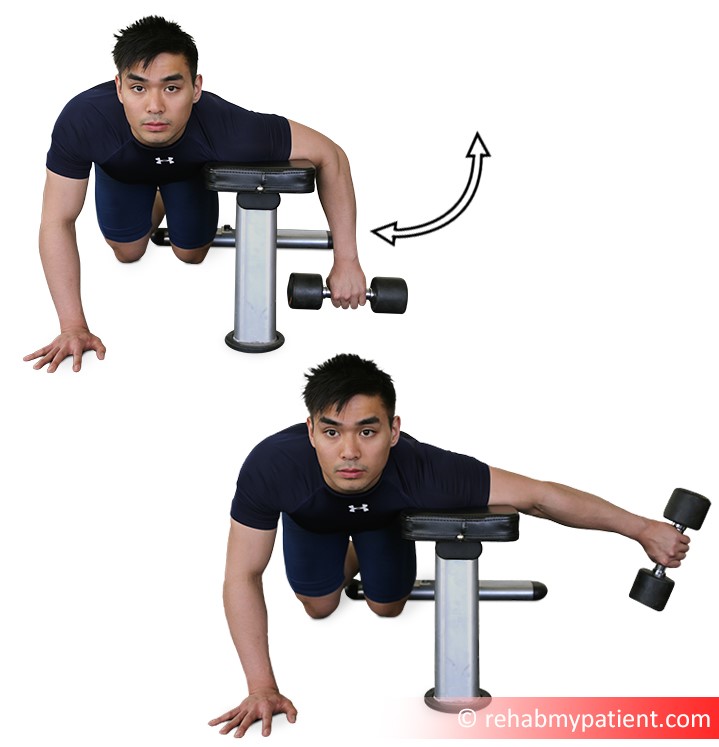
General information
The anconeus muscle is triangular in shape and lies across the elbow joint. Although there are some conflicting opinions between the experts, it appears that the anconeus is a continuation of the triceps brachii. Its purpose is to assist in the extension
Literal meaning
From the Greek word ankon: elbow, bend of the arm, and the Latin adjective suffix –eus, meaning characterized by.
Interesting information
The anconeus is a very short muscle, only a few inches in length. It is analogous to a rubber band stretched across the width of the elbow, designed to control movement of the joint.
The major argument seems to be one of whether or not the anconeus is an independent muscle, or if it is simply a continuation of the triceps muscle. While some experts think that it is a component of the posterior compartment of the arm, others are confident that it is instead, a posterior compartment of the forearm.
In order to feel the anconeus muscle, simply place your fingers on your elbow and slide them off the bone in the direction of the thumb side of your arm.
Due to its unique location, the anconeus is not prone to injuries, with a few exceptions, including cases where the elbow is hyperextended or during shoulder dislocation or fractures of the upper humerus. Further, it is known to be afflicted by strains and tendonitis. A familiar injury, “tennis elbow” is a condition that impacts the anconeus, among other arm muscles. When these muscles and their attendant tendons are over-exerted, inflammation, or tendonitis occurs.
Treat strains to the anconeus, or tennis elbow, by protecting it from further injury, rest it, ice it, compress it with an elastic bandage and elevate it. Pain can be treated with non-steroidal anti-inflammatory drugs. Surgery should be considered in very rare cases.
Origin
Backside of the lateral epicondyle of the humerus.
Insertion
Under the process, along the posterior of the ulna.
Function
Its function, although not certain, may assist in the full extension of the elbow. Additionally, it stabilizes the elbow, and protects the capsule containing the elbow joint when it is extended.
Nerve supply
Radial nerve (cervical roots 7 and 8).
Blood supply
Middle collateral artery from the profunda brachii artery

Relevant research
In some cases, the anconeus muscle is transposed in order to treat cases of chronic lateral epicondylitis (degeneration of the epicondyle tendon). Rotation of the muscle, close to the epicondyle, allows the epicondyle bone and the exposed radiohumeral joint to be covered. This procedure caused treated patients to become painless in many cases, and allowed a complete recovery of their elbow range of motion and grip strength.
Luchetti R, Atzei A, Brunelli F, Fairplay T (2005). Anconeus muscle transposition for chronic lateral epicondylitis, recurrences, and complications. Techniques in Hand and Upper Extremity Surgery. 2005; 9 (2):105-112.
Anconeus exercises
The “anconeus sidekick” is a relatively simple exercise: kneel down alongside a bench, using it to support your upper arm, leaving it at right angles to your body, parallel to the floor. Your forearm should then be hanging straight down. Pick up a dumbbell with your thumb pointed downward, raising the forearm horizontal. Perform three sets of 12 repetitions each, at least three times every week. This can be followed up with typical triceps work.

Sign Up
Sign up for your free trial now!
Get started with Rehab My Patient today and revolutionize your exercise prescription process for effective rehabilitation.
Start Your 14-Day Free Trial